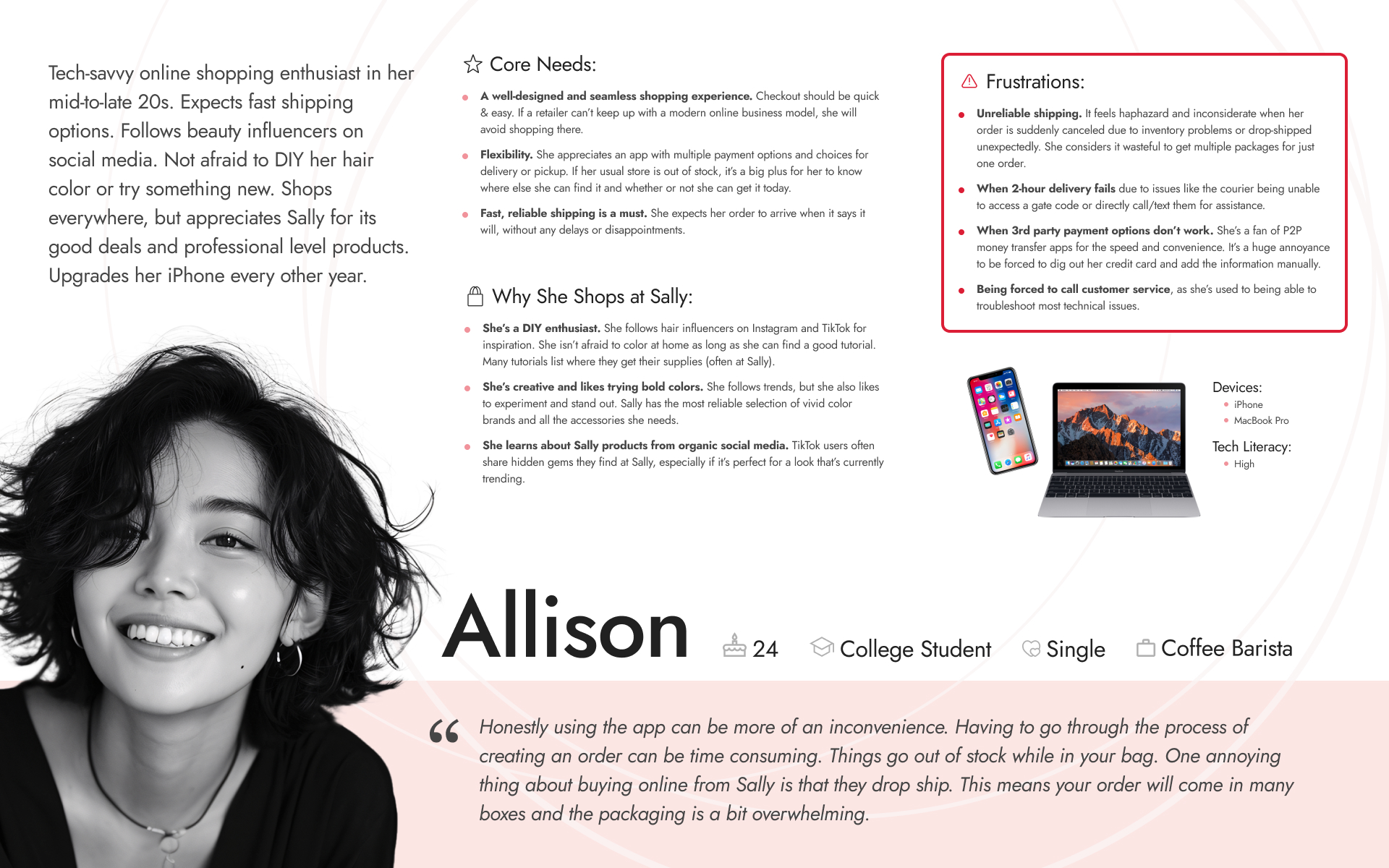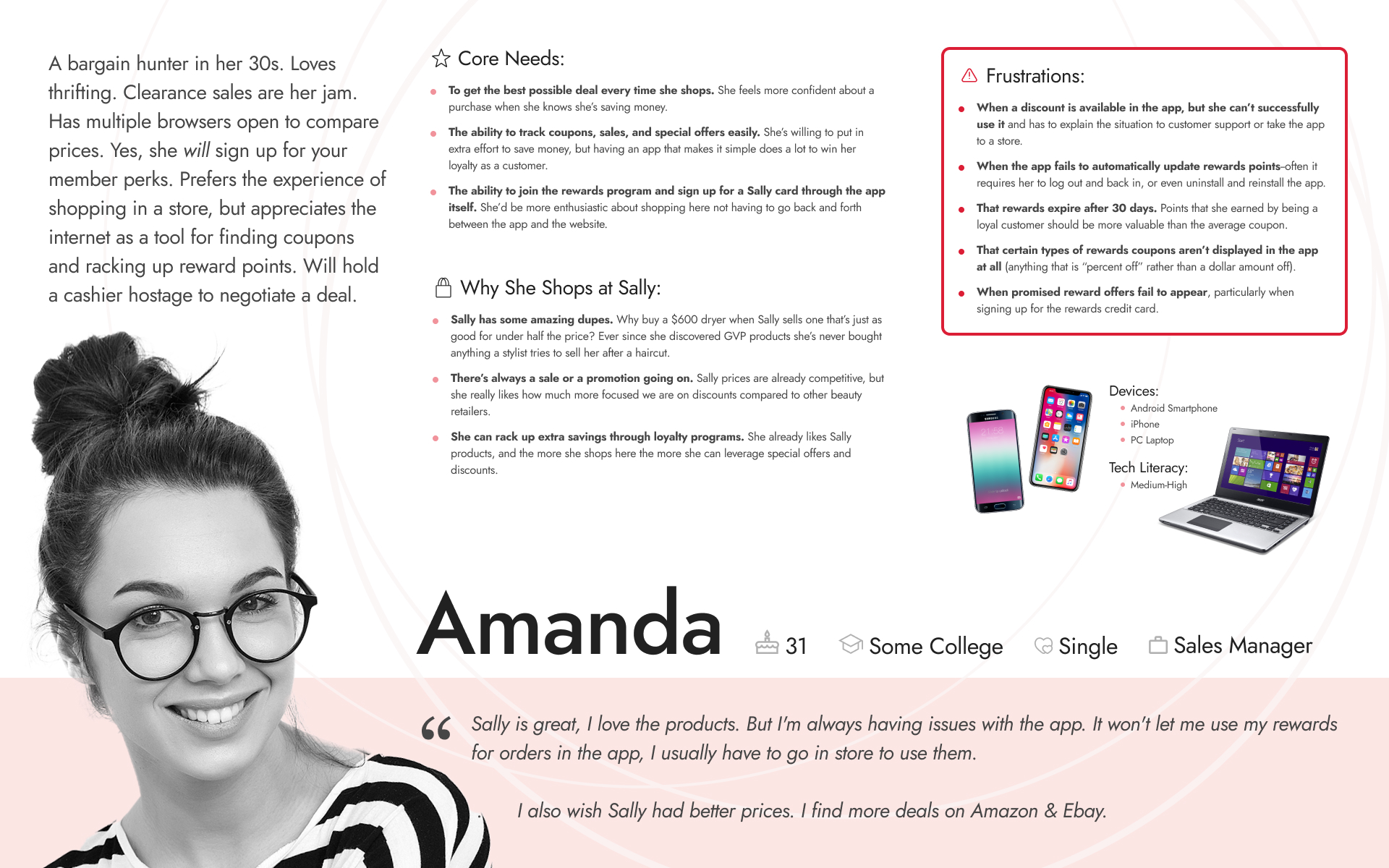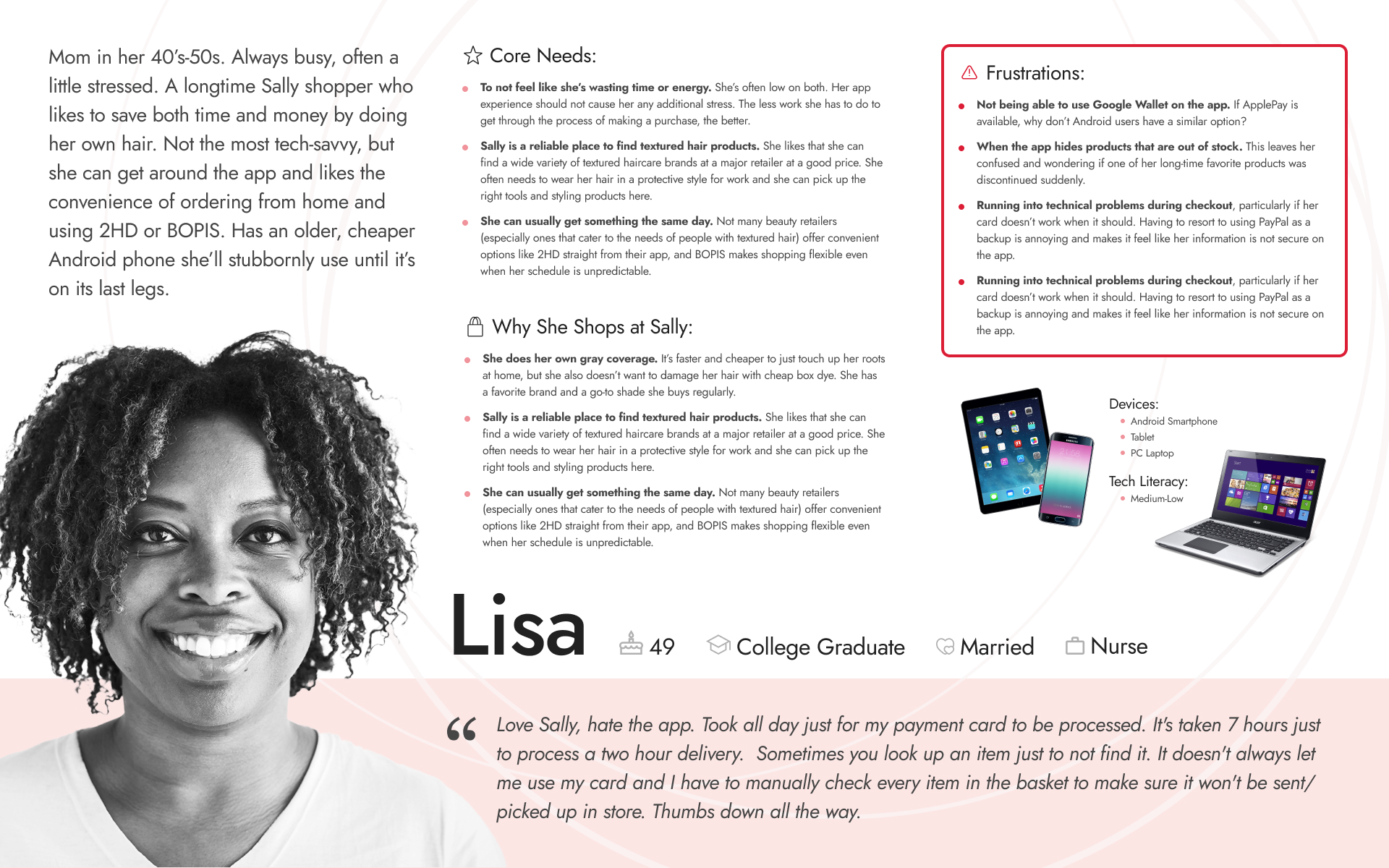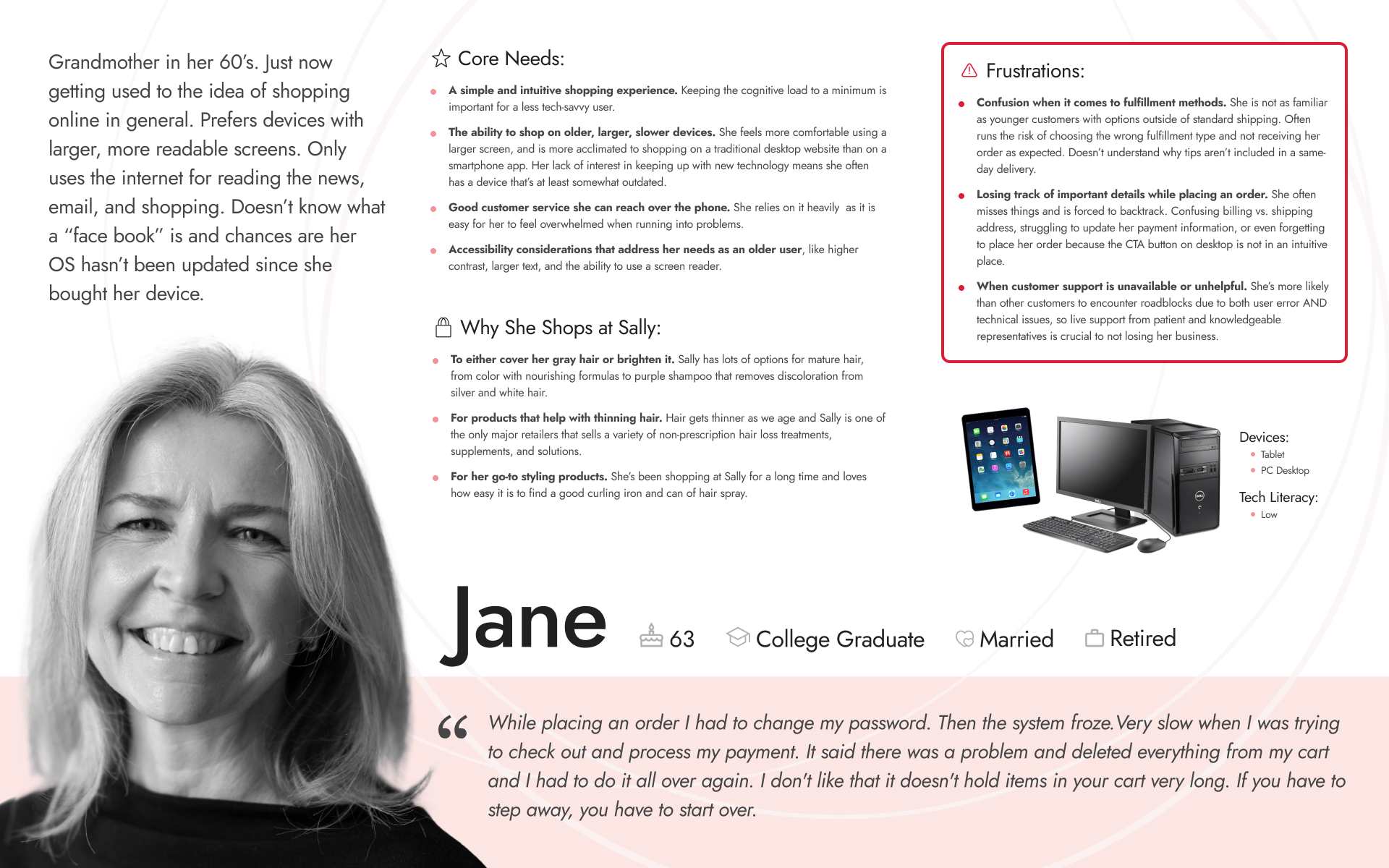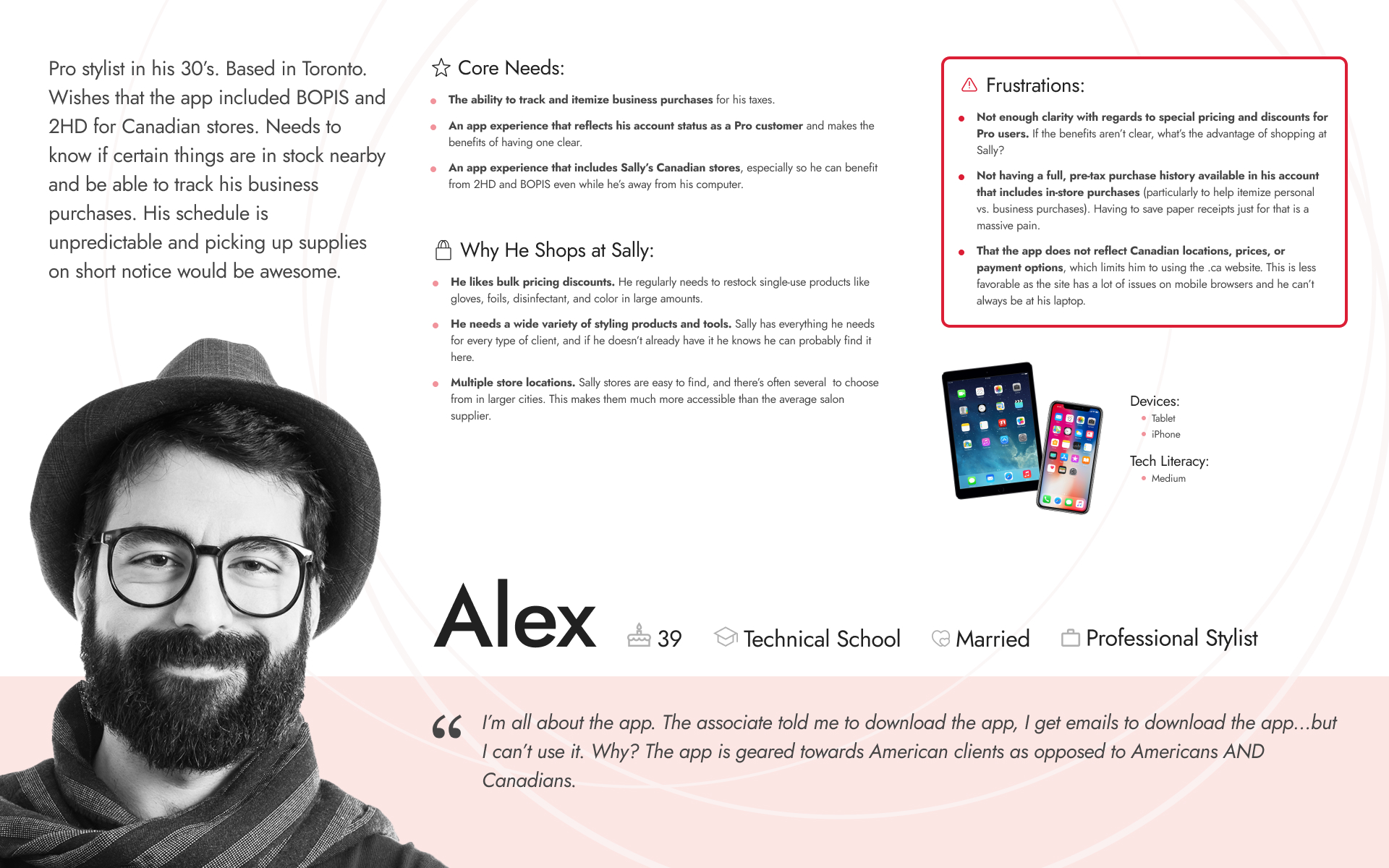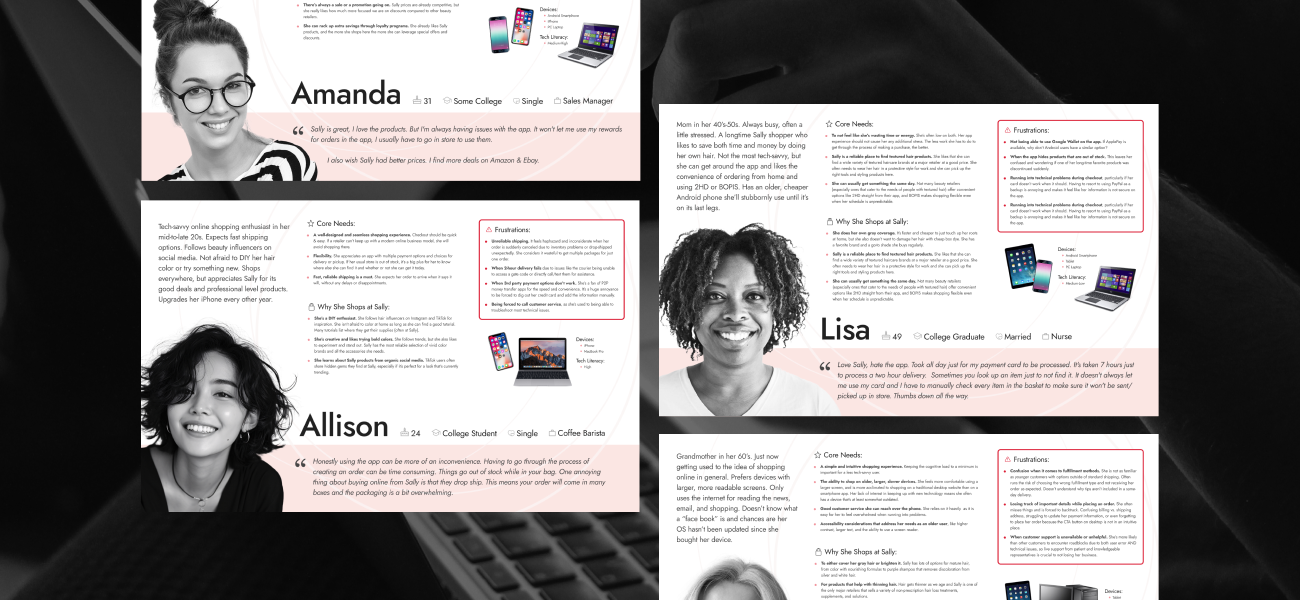

The Sally UX team’s goal in creating personas was to make the conclusions of our research more accessible to stakeholders. We wanted to help the digital product team connect with our users and overall make better product decisions.
Personas are a useful method to humanize data trends and apply a customer-centered approach to product development. Using a wide range of data, from user surveys and reviews to interviews with customer service representatives, we were able to analyze trends and patterns that helped us broadly categorize different types of users and how we can improve their experiences.
I focused on app customers and analyzing app-specific user needs and pain points. Another designer on the team developed personas for website users, and we assisted each other in conducting interviews.

We wanted to better understand our app users and mobile web users as distinct customer bases and gain valuable insight into their core needs and biggest frustrations. I started out with a few basic questions I knew would need to be explored in the course of my research:
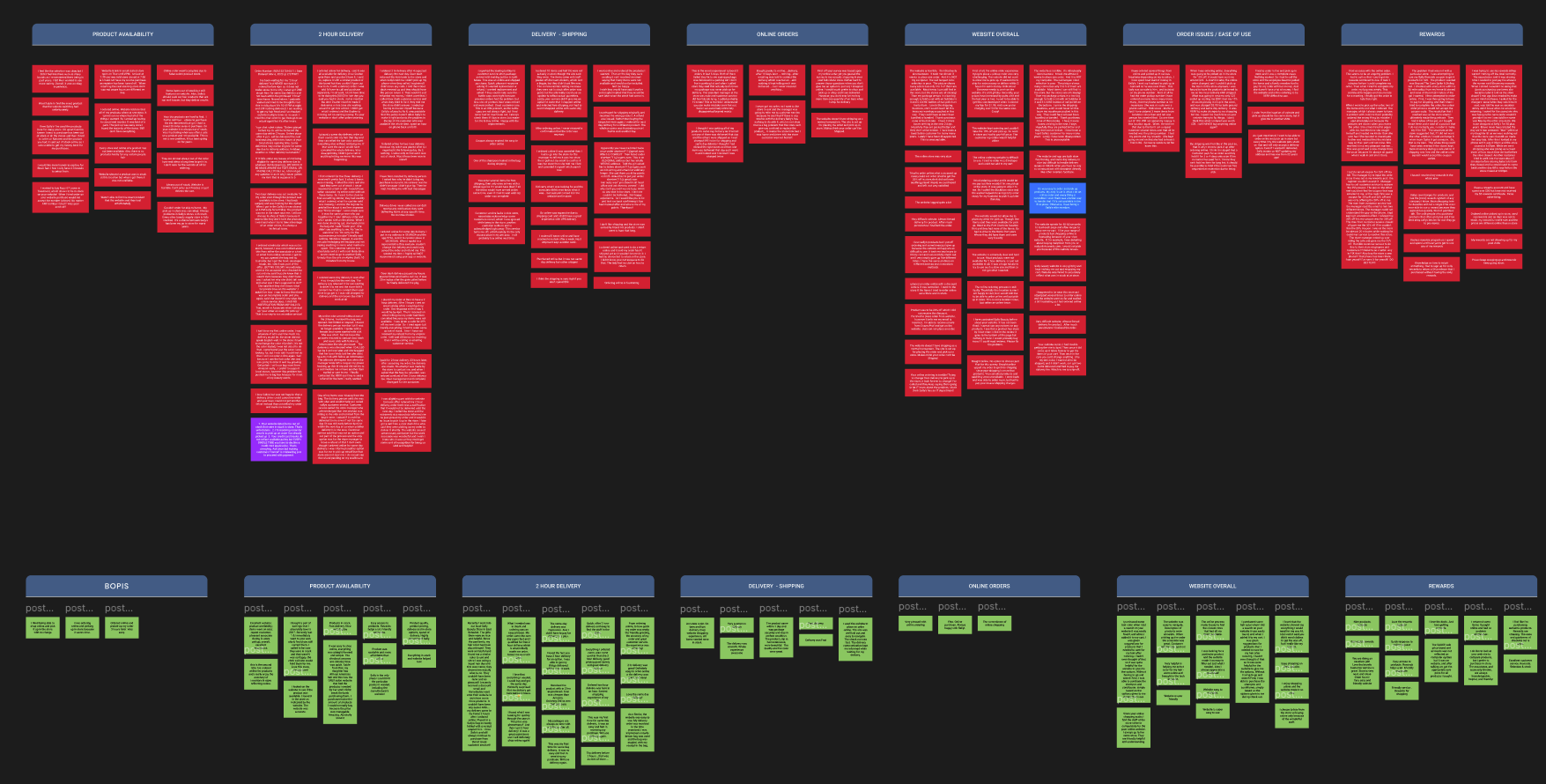
We compiled large amounts of information on various metrics related to the performance of the site and app (engagement rate, device usage, browser types, geo data, funnels, OS versions, downloads, etc.) to get a more concrete picture of who is using what. Information came from the following sources:
We also collected hundreds of comments left by customers, both positive and negative, on their experiences with the app and the website. We compiled and sorted them to help identify overall patterns that emerged. To ensure that we were getting an accurate picture, we limited our data set to comments made within the last 3 months. Information came from the following sources:
Finally, we scheduled live interviews over WebEx with four Sally Customer Care Support Agents, who answered several of our questions about app and web users and provided valuable, highly specific insight that we would not have been able to pick up from data and reviews alone. They also helped to corroborate the accuracy of general complaints we noticed from customer reviews. Each interview lasted from 30 minutes to an hour.
Empathy maps have four quadrants that capture the following:
They are also a great tool for planning future research, particularly for identifying what we are unsure about. As we developed them with the intent to be the foundation of our personas, the maps were an incredibly useful tool for keeping us organized.
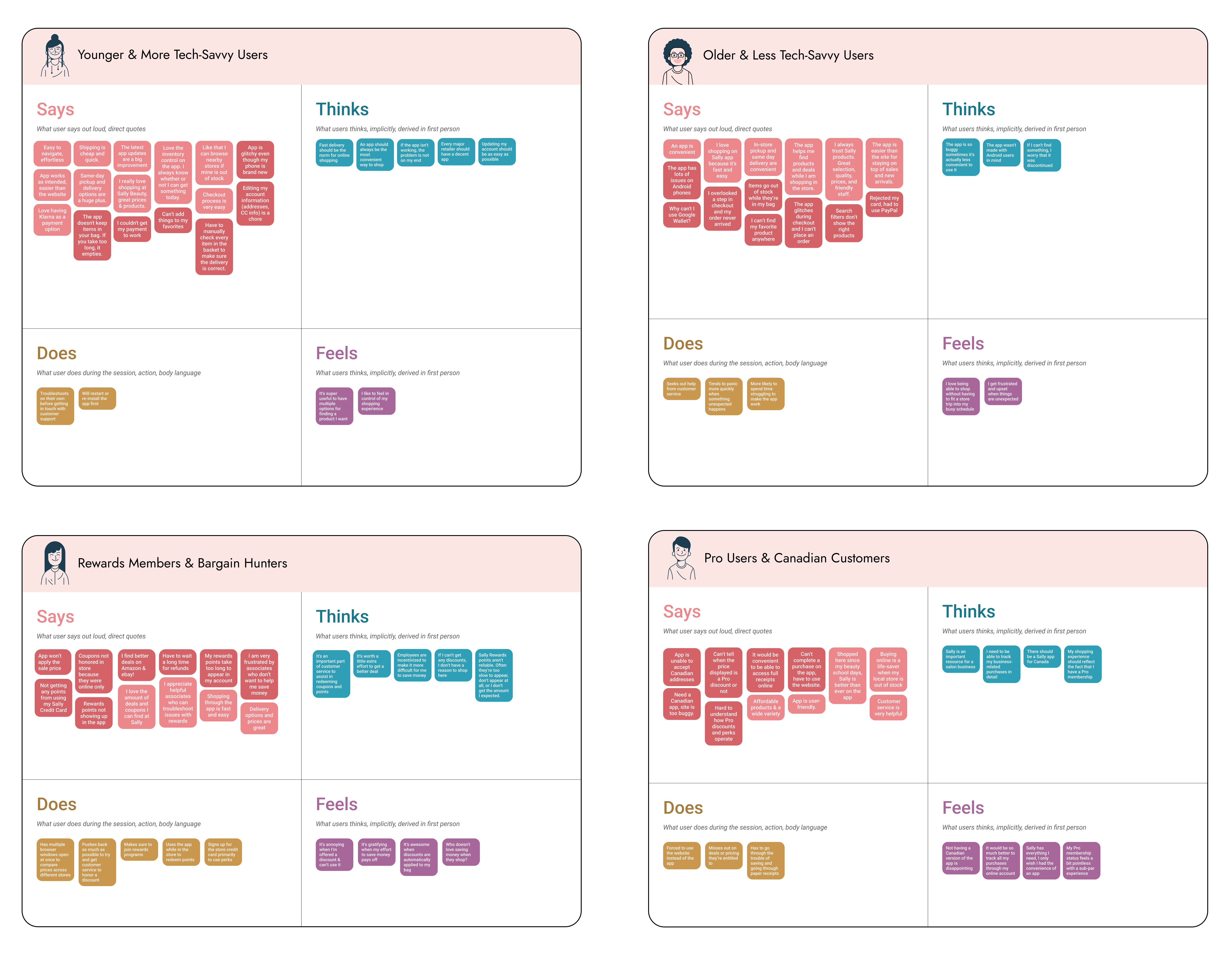
I organized my insights into general groups that represent customers with similar characteristics, needs, goals, and behaviors.
Once the empathy maps felt solid, I consolidated them into individual user personas. I came up with 5 personas that best represent our real world customers and their overall experience with the Sally app. Our team focused primarily on customer pain points to help us identify where we need the most improvements, but these personas were designed in a way that makes it easy to explore new questions about our users.
Download PDF Version